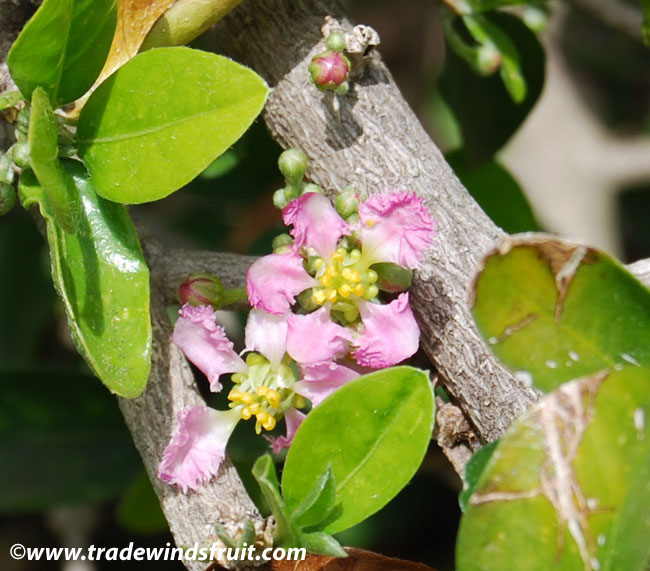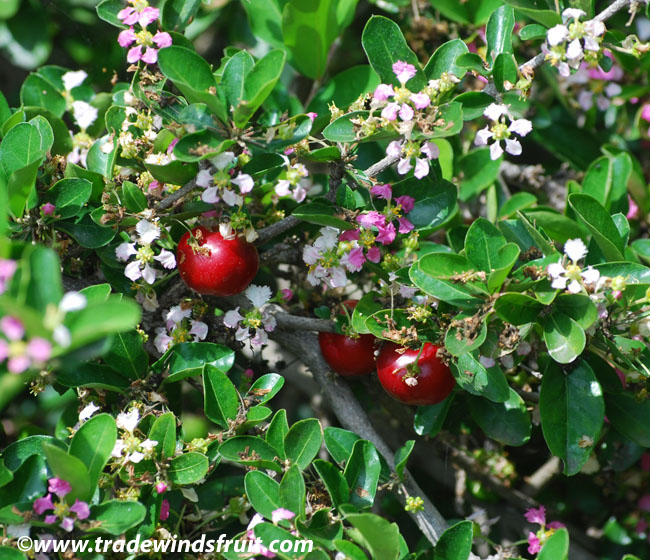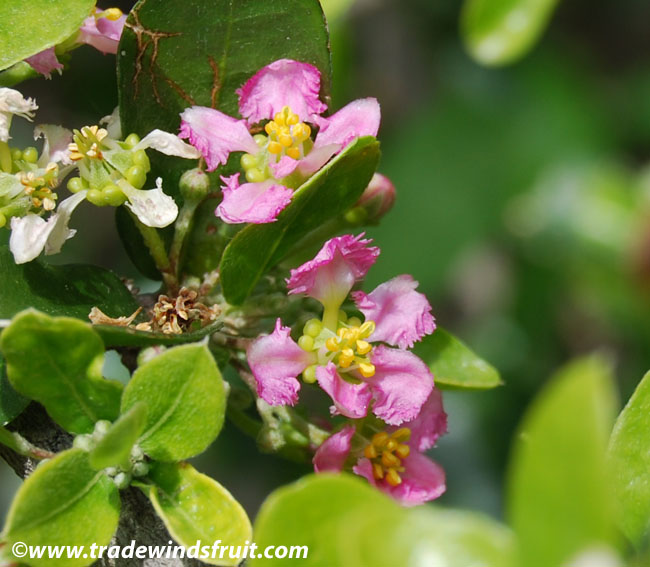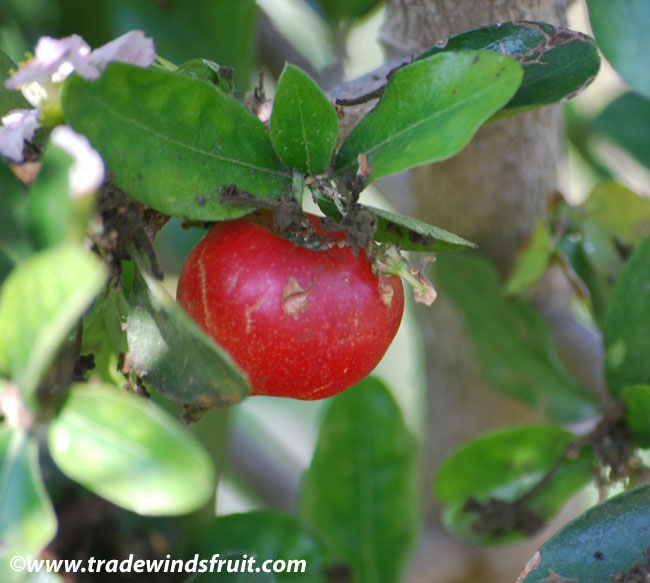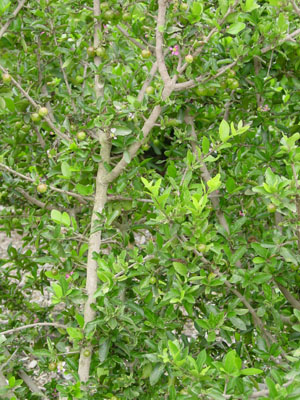- Home »
- Information »
- Acerola
Acerola
Malpighia punicifolia
Small, bright red, berry-sized fruit with a vitamin C content up to 65 times that of an orange. A single fruit contains the minimum daily recommended vitamin C requirements. Fruit resembles the common cherry, with a very tasty sweet flavor having a slight bite of acid.
Seed Availability
Seeds are not available for the Acerola. Please visit our seed store to view current selections. Seeds were last available in July 2016.
Description
A bushy shrub up to 20ft. Acerola's often form small multi-trunked trees. Trees without adequate pollination can set seedless fruit. Flowers usually appear after periods of rainfall or irrigation. Flowering may occur any time during the year (depending on local rainfall and climate patterns), and can last year-round. After flower set, fruit soon follows and will ripen in just 3-4 weeks. Fruits lose their flavor and nutritional content very rapidly upon harvest. Ripe acerola's should be picked and eaten within a few hours to preserve taste. As a result, the tree is not cultivated for commercial production of fresh fruits.
There is some confusion regarding the botanical name, with the name M. glabra often used for the acerola. There is a closely related species, the true M. glabra, having smaller fruits and larger leaves. The common acerola, with its larger fruits is generally classified as M. punicifolia.
Hardiness
Plants can stand temperatures down to 28F and possibly a bit lower.
Growing Environment
Acerola's prefer to grow in warm to hot climates, with temperatures reaching 85-90F. Trees grow well in slightly acidic soil. Trees often require little or no care. Will take long periods of drought once established. They also make good container specimens.
Propagation
Often by seeds which unfortunately can have low germination rates.
Germination Info
Seeds are generally very slow and difficult to germinate, usually requiring from 6 to 12 months at minimum. Seeds should be kept in moderately moist soil at 70-85F. Plant seeds at 1/4-1/2" deep. Do not overwater. Use well-drained soil. Germination rates widely vary and germination is sporadic.
Uses
Eaten fresh or juiced for drinks. Commonly used in parts of South America to flavor ice creams, drinks, and cocktails. Acerola's are used in many commercial vitamins and nutritional products, mainly for their vitamin C content. see also: nutrition facts
Native Range
Native range extends from South Texas (though this is probably just the closely related M. glabra) through the Caribbean, Central America, and Brazil. Commercial production mainly supplies beverage makers, and for additives in nutritional products. Acerola's are not usually sold as a fresh fruit. Additionally, the acerola is a common dooryard tree throughout much of Central America.
Additional Pictures
Related Species
| Malpighiaceae | |||
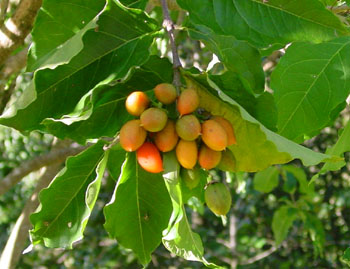 |
Bunchosia armeniaca Peanut Butter Fruit |
 |
Byrsonima basiloba Field Nance |
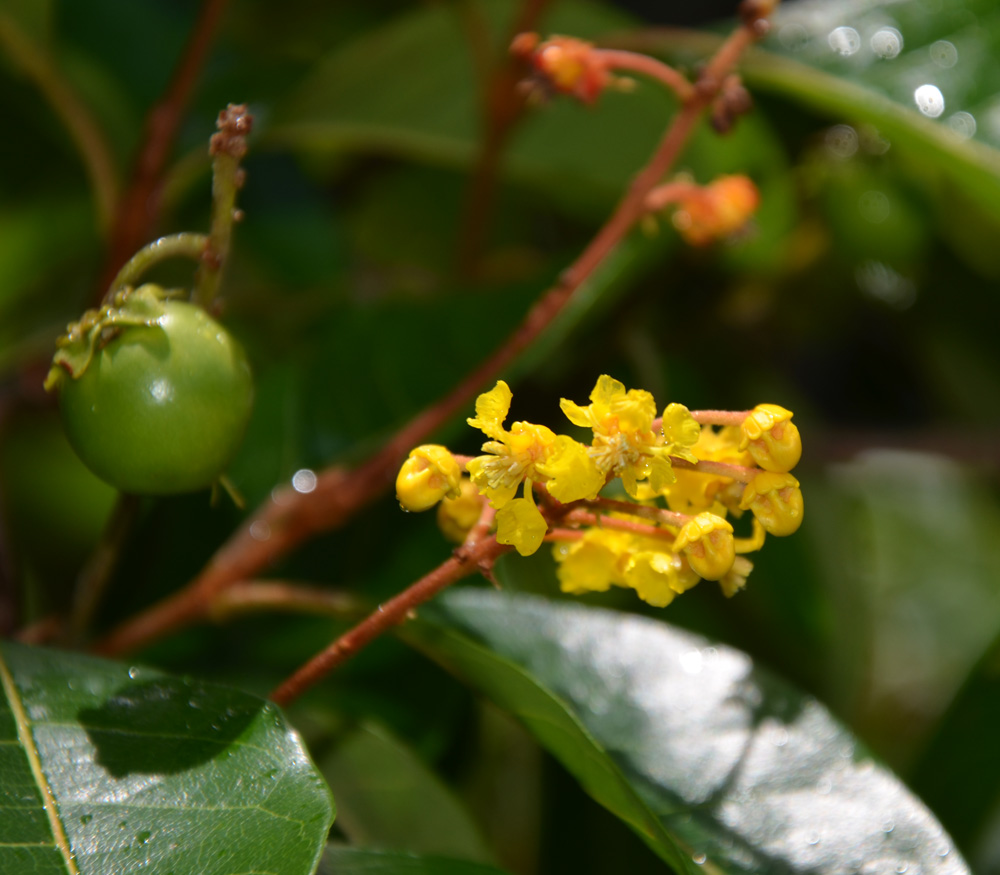 |
Byrsonima crassiflora Nance |
 |
Dicella nucifera Chestnut Vine |
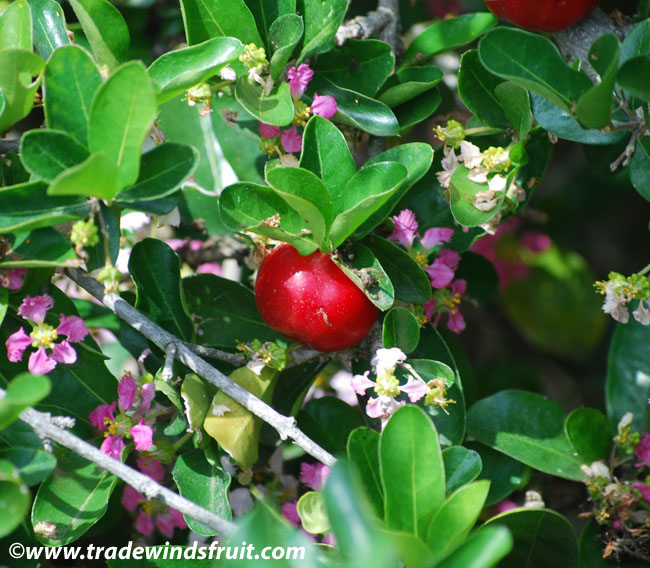 |
Malpighia punicifolia Acerola |

